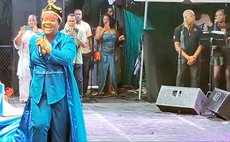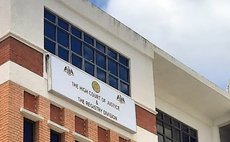The centuries-old Macoucherie Estate
Macouchrie Estate is the last working rum producing plantation in Dominica.
The estate has been under the control of the Shillingford family for over 80 years now.
Distiller, Kentish Shillingford explained that the first rum made by Macouchrie Estate was Cask Rum. Today, the estate produces four different types of rum: Macouchrie White, Macouchrie Dark, Bois Bande and Prime Star.
During the 18th century, Macouchrie Estate was owned by James Laing of Scotland. Kentish said the work on the estate was done by 113 slaves. They produced 196, 000 pounds of sugar, 4025 gallons of rum and 7225 gallons of molasses.
During the period of slavery, as the French settlers started to take over the land after 1700, the Kalinago people retreated from Macouchrie and moved over the mountains to the East Coast. This part of the West Coast was settled by the French colonists from Guadeloupe. In the 1760's, Frenchman, Gabriel Brousse was listed as the occupier of Macouchrie. The size of his holdings along both sides of the river was 150 acres. Other lots were added later to form part of the enlarged plantation.
The buildings still in use at Macouchrie Estate date from the 1770's and therefore are just over 240 years old. An important building on the estate was the warehouse down by the shore. In those days, before motor vehicles and roads, all supplies and estate produce had to be transferred by sea. Every plantation had a warehouse near to a landing place, in order to store the cargo that was arriving and to store the casks of rum. Macouchrie Estate in Dominica still has its coastal warehouse in place. Besides being the last estate in Dominica to produce rum, Macouchrie also has the last operational trapiche mills in the Caribbean. A trapiche mill is completely operated by water.
According to documents provided, once full emancipation was granted to the enslaved on August 1, 1838, the former slaves who chose not to continue to work on the estate had to leave the property and move to their huts. Many of them moved in the neighboring villages of St Joseph and Salisbury or went to Roseau to look for work.
After slavery was abolished, the Macouchrie Estate passed through a few hands before the Shillingfords took over. William Davis and his heirs and successors operated the estate until the 1860's; in 1869 it was owned by J.L Laidlaw. James Royer was the owner in 1924 at which time it was registered as being 481 acres in extent.
In the early 1930's, the estate fell into debt with the Government Loan Board and it was bought over by Howell Shillingford who died in the 1970's. Macouchrie today
The Macoucherie Estate is managed by Clifton D. Shillingford who is the Chief Executive Officer (CEO). The estate usually has about 25 full time employees and a production capacity of about 19, 000 litres. They produce four types of rum. The Prime Star is made from distilled molasses which is imported. However, the other types are all made from cane. The Macouchrie Estate has about 25.5 acres of land dedicated to the cultivation of sugar cane.
The estate's layout is still intact up to this date; an actual slave house is still on the plantation which is currently used to store the copra. The copra is sold to the Belfast Factory and is used to make soaps and shampoos.
Kentish Shillingford said that exports are not at the level that management would like. At the moment, exports are only done to St Maarten.
He said that one of the challenges is that rums are imported and being retailed at competitive prices.




